Sacred Seconds: Capturing Transient Moments at Ohara Aso Shrine In Kikuyo Town
public: 2024.05.07
writer:kese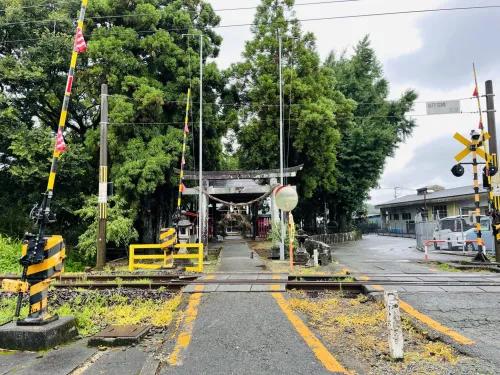
I stumbled upon a scene like in a movie or drama, so I went there with my camera.
Contents
“The ‘Wait, What?’ Spots You Pass By”
Driving near Haramizu Station on the old Route 57 that stretches from Kumamoto to Kikuyo,
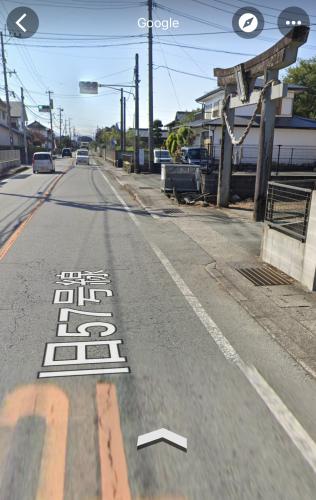
have you ever seen a torii gate like this one along the road?

This is the entrance to Ohara Aso Shrine, marked by what seems at first glance to be an ordinary torii gate.
Yet, as you pass through it, you encounter a rare sight: a torii gate, a railway crossing, followed by yet another torii gate – a unique sequence that offers a momentary journey from the mundane to the sacred.
A Rainy Stroll within the Shrine Grounds

Once again, we approach the torii gate before the railroad crossing. The color of the crossing in the middle of the approach path is inexplicably captivating.
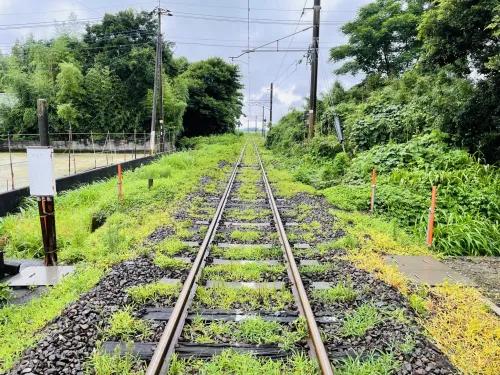
And there’s something so…
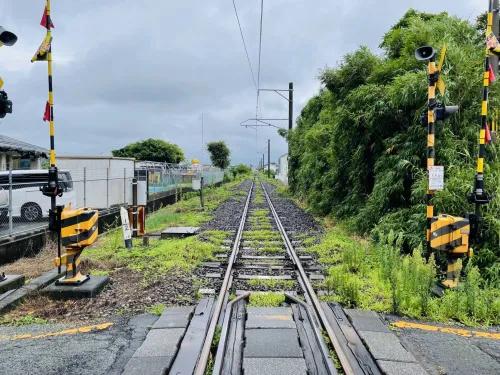
…nostalgic about railways.
You find yourself gazing intently at where the tracks lead and where they come from. (This photo was taken reaching out from beyond the railway tracks.)
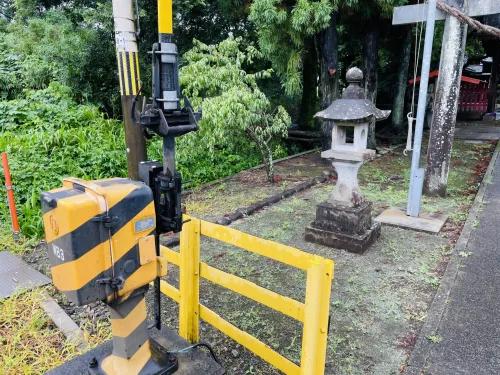
The mix of the modern and the old creates an indescribable atmosphere.
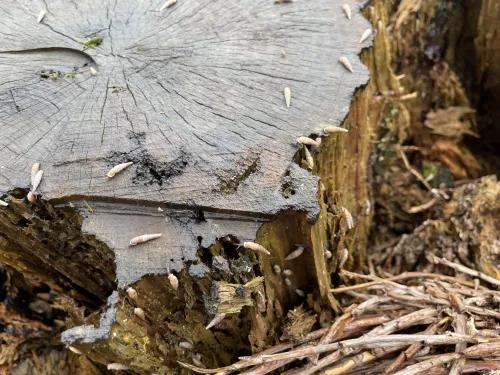
Ah! Here are many of Kumamoto’s famous “yonaki” (crying-at-night) snails (also known as “door snails”).
Perhaps this used to be a ginkgo tree.
In Japan, door snails like these are said to soothe a baby’s nighttime cries when placed on their pillow.
I once received one at Yuge Shrine and placed it on my child’s pillowcase, but this is the first time I’ve seen so many in one spot.
According to custom, once the baby’s nighttime crying ceases, one must return the snail gently to where it came from.

This shrine is unusual for having a railroad crossing right on the approach leading up to the shrine. Amid the gentle drizzle, I stroll through the quiet precincts.
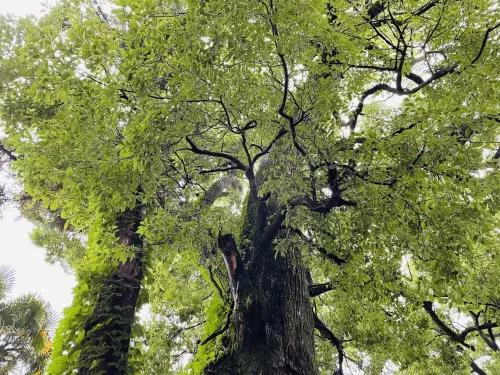
An incredibly large tree loom overhead.
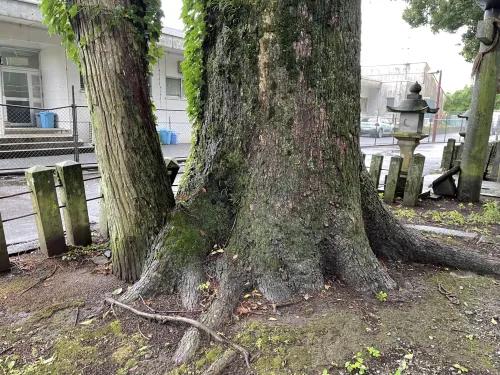
Looking down at the base, we can see it seems to actually be two different trees.
This tree has steadfastly witnessed the history of the area.
In the Presence of Gods: Our Haste and Their Tranquility
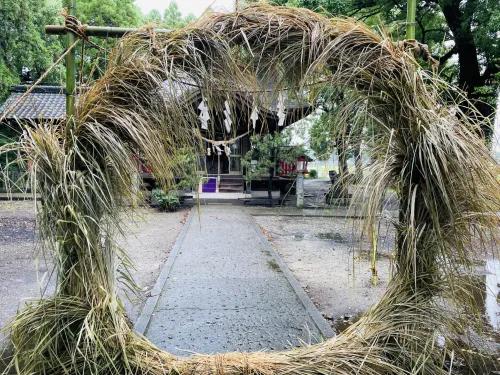
I encountered the remnants of a “chinowa kuguri“, chinowa referring to the large ring made of cogon grass and “kuguri“, coming from the Japanese verb to “pass through”.
Inside the sacred boundaries marked by important object such as the shrine’s torii gates, this large grass ring is crafted for a ritual performed on June 30th, wishing for health and well-being.
Although it seems to have weathered some wind and rain, it was my first time seeing a chinowa like this. It’s said that taking this grass home is synonymous with bringng misfortune home, so let’s refrain from doing so.

An ancient shrine that exudes history.
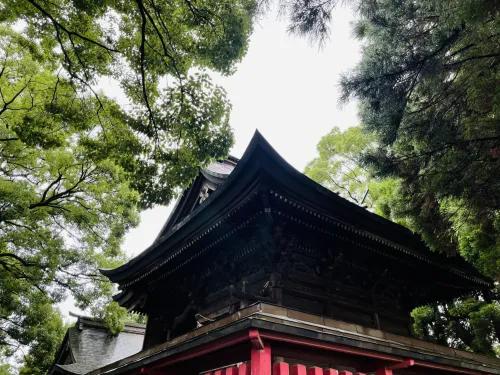
It is a quiet place protected by many trees. Droplets of rain were falling from the trees with the wind, and although it was dark, it was a scene that felt very Japanese.
A Scene Etched in Memory
I was just in time to see the train pass by.
From the perspective of a shrine with a long history, our life may seem fleeting.
The train crossing in front of the ancient torii gate seems to symbolize our current era passing through this timeless space.
Note: Please be cautious around the tracks and trains when visiting.
Ohara Aso Shrine
| address | 1592 Haramizu Kikuyo-machi, |
|---|
TRANSLATOR
kese
I was shocked by Lady Gaga's “Poker Face” in my childhood, fell in love with English songs, and now I am a university student majoring in English. I will do my best to bring you enjoyable English translations!








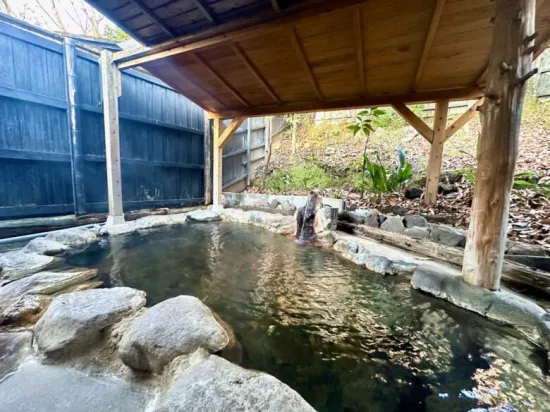








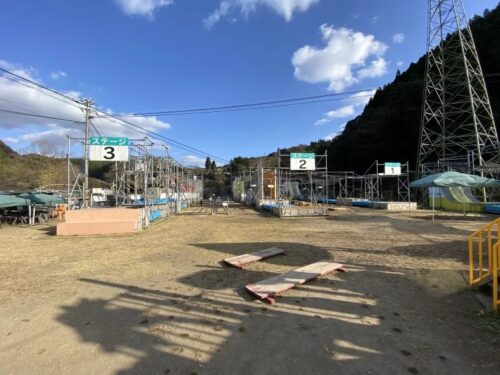



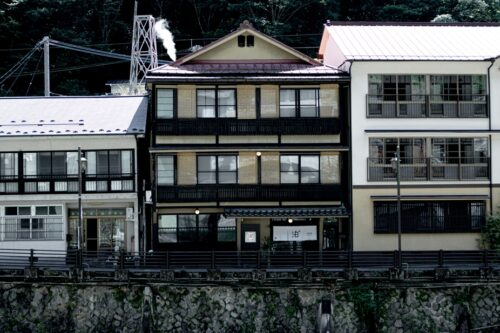
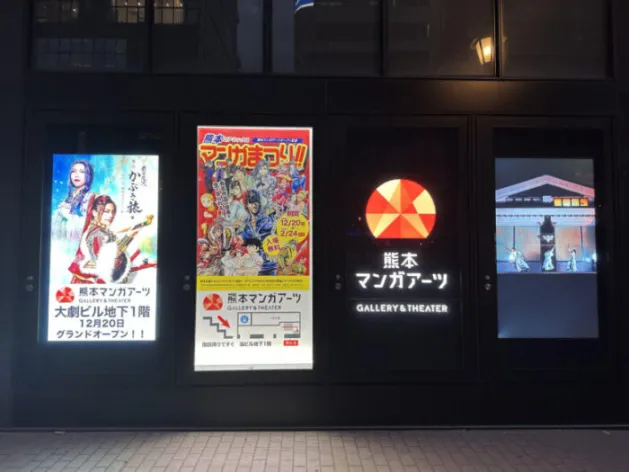










SHARE